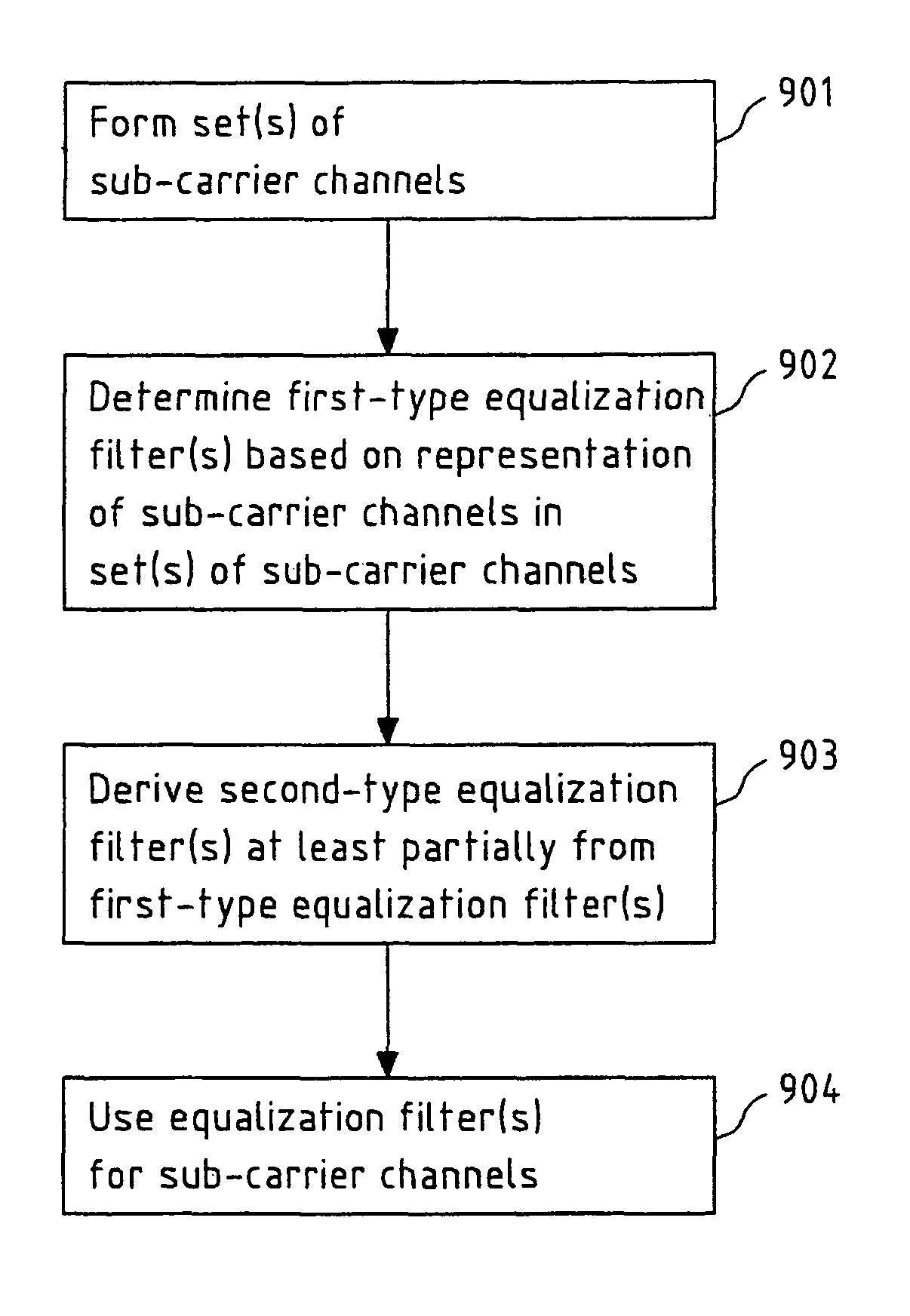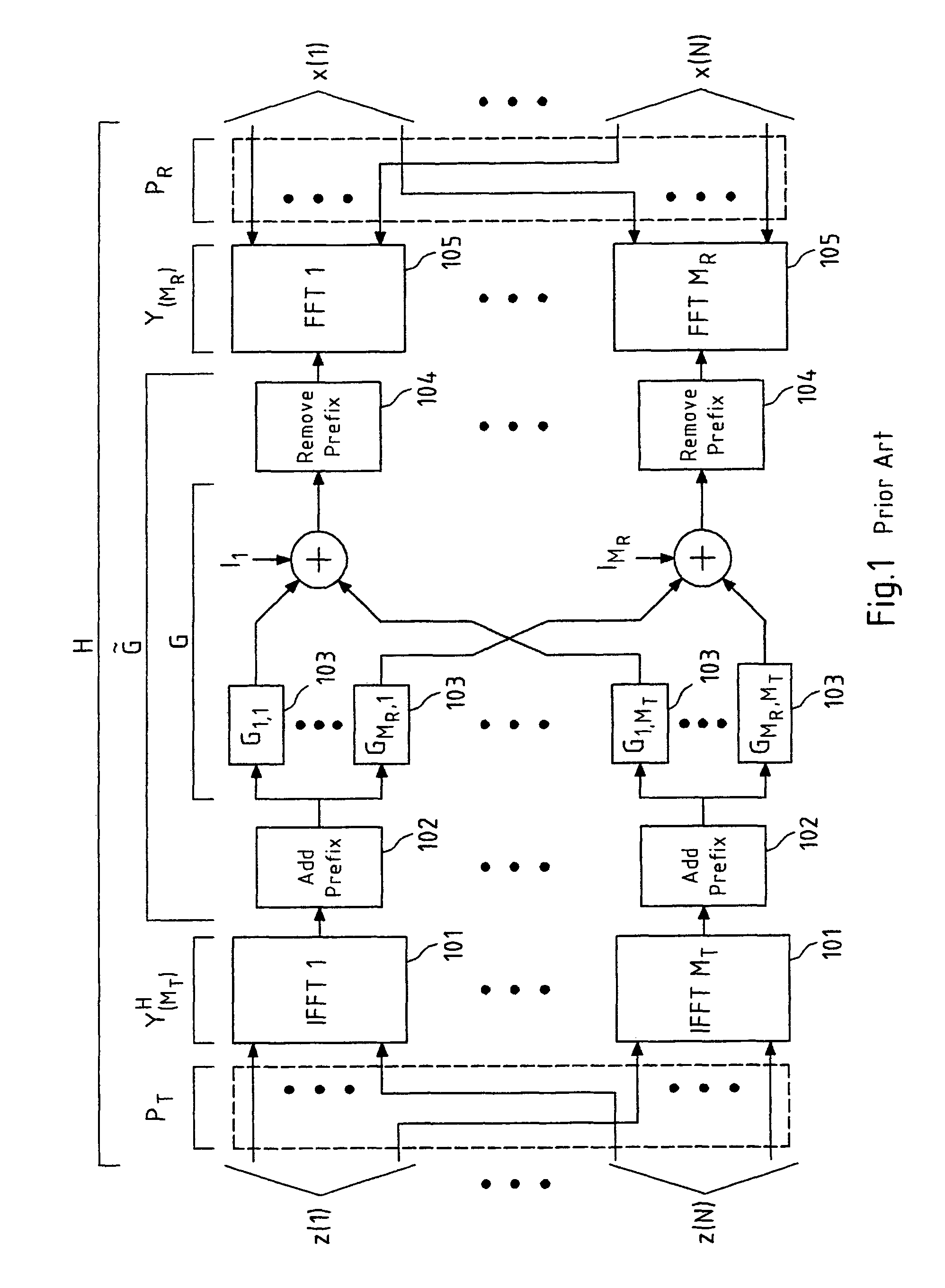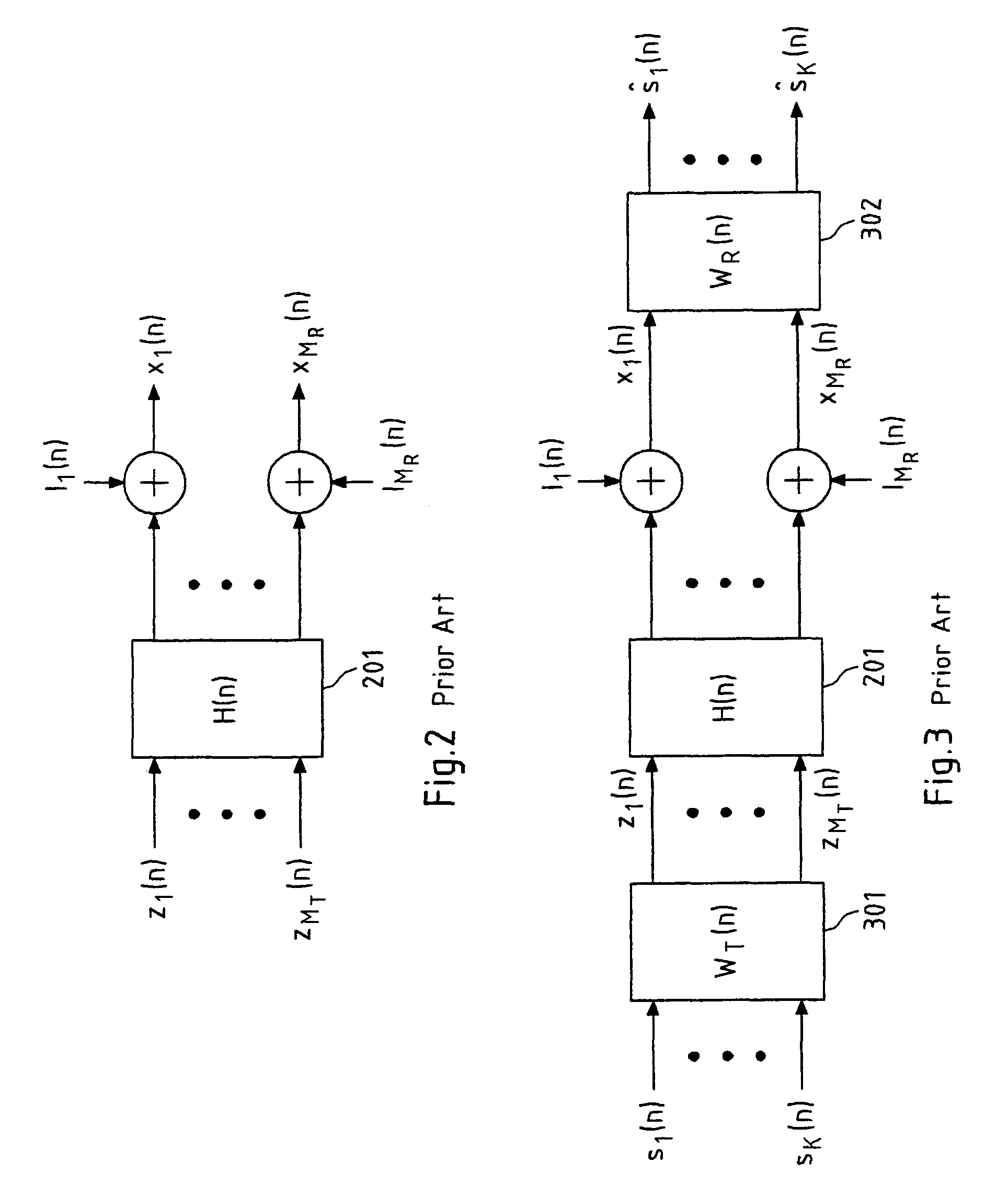Reduced complexity frequency domain equalization of multiple input multiple output channels
a frequency domain and complexity technology, applied in the field of reducing complexity frequency domain equalization of multiple input multiple output channels, can solve the problem that the proposal is not suited to frequency-selective transmission channels, and achieve the effect of reducing computational complexity and improving equalization performan
- Summary
- Abstract
- Description
- Claims
- Application Information
AI Technical Summary
Benefits of technology
Problems solved by technology
Method used
Image
Examples
first embodiment
[0125]FIG. 5 schematically depicts the present invention. In particular, FIG. 5 depicts the pre- and / or post-equalization of N decoupled sub-carrier channels H(n) 201 with corresponding pre-equalization filters WT(n) 301 and post-equalization filters WR(n) 302. It is readily understood that the cases in which only pre-equalization or only post-equalization is performed are included in this schematic representation as well, for instance, by appropriately setting the post- or pre-equalization filters equal to an identity matrix, respectively. The pre- and / or post-equalization allows for a reconstruction of the symbols sk(n) transmitted over each sub-carrier channel H(n), yielding reconstructed symbols ŝk (n).
[0126]In FIG. 5, the formation of a set 501 of sub-carrier channels H(n) 201 comprising {tilde over (B)} sub-carrier channels is depicted in dashed lines. The size {tilde over (B)} of said set 501 may for instance be deduced from an estimation or measurement of the channel coheren...
second embodiment
[0129]In the present invention according to FIG. 6, a set 501 of sub-carrier channels 201 is formed as in FIG. 5, and for said set of sub-carrier channels, a first-type equalization filter is determined based on either a single (e.g., a first or center) or an averaged sub-carrier channel (e.g. averaged over all sub-carrier channels of a set 501 of sub-carrier channels).
[0130]As in the embodiment of FIG. 5, K−1 sets 501 of {tilde over (B)} sub-carrier channels each with one respective determined first-type equalization filter WT,b and / or WR,b with b=1, . . . , N / {tilde over (B)} are formed. However, the second-type equalization filters in each of said sets 501 are not derived as identical equalization filters from said respective first-type equalization filters, but are obtained via interpolation and / or extrapolation, as is indicated by the notation
[0131]WT,b=f(n;B~;N;WT,1,…,WT,NB_)
(for WR,b correspondingly), i.e. each equalization filter is a function of the sub-carrier index n, t...
PUM
 Login to View More
Login to View More Abstract
Description
Claims
Application Information
 Login to View More
Login to View More - R&D
- Intellectual Property
- Life Sciences
- Materials
- Tech Scout
- Unparalleled Data Quality
- Higher Quality Content
- 60% Fewer Hallucinations
Browse by: Latest US Patents, China's latest patents, Technical Efficacy Thesaurus, Application Domain, Technology Topic, Popular Technical Reports.
© 2025 PatSnap. All rights reserved.Legal|Privacy policy|Modern Slavery Act Transparency Statement|Sitemap|About US| Contact US: help@patsnap.com



